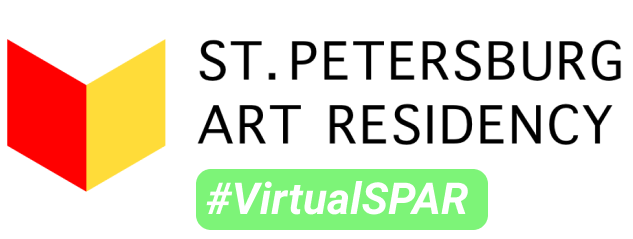As part of my new project on ancestor worship, I have got to think about my own heritage and identity. The subject of identity for my generation from Hong Kong are often tricky. Why do we call ourselves HongKongers but not Chinese? Are we Chinese in Hong Kong or HongKongers in China?
In England, I was often asked where I am from. I always answered Hong Kong. I would say that I am ethnically Chinese and I’m from Hong Kong. Even though Hong Kong has been part of China since 1997, it didn’t feel like China growing up. We had inherited the British colonial governance system, the rule of law, in fact, the Basic Law – the de facto constitution of HK which became effective from 1997, signed by Margaret Thatcher and Deng Xiaoping in 1984, states that Hong Kong was to maintain its status quo for another fifty years. With the absence of decolonisation, the in-betweenness which has characterised the experience of living in Hong Kong had been made more prominent despite being officially part of China.
In fact, the long standing survey by the Hong Kong University Public Opinion Program, which started in 1997 and continued until 2019, asked the respondents who they identify as. Those who identified with purely Hong Konger fluctuated greatly over the years but has steadily increased from average at 60% in 1997 to around 70% in 2018. Interestingly, while those who identified as purely Hong Konger or purely Chinese fluctuated greatly over the years, those who said they had mixed identity had remained relatively consistent at an average of 38%, which shows how hybridity underlies the complexity of the problem of identity in Hong Kong.
The concept of HongKonger as an identity is relatively new. It had emerged from around 1970s onwards as the governor Maclehose introduced a series of social and welfare reforms. These reforms included housing, transportation, anti-corruption, welfare and education. The reforms greatly improve people’s living standards and also created for HK people a sense of belonging. Previously, Hong Kong was a haven for refugees from China who considered the city as a temporary stop. It was only after the 1970s that residents of Hong Kong began to call the city their home. My grandparents never considered themselves HongKongers, they came to Hong Kong in the thirties to escape poverty in China. They barely spoke Cantonese, or Mandarin in that respect. they were versed in their local dialect and lived and hung out with their corresponding “tong xiang”, their fellow villagers / townsman. Their allegiances were tied to their home village. My father considers himself staunchly Chinese born and bred in HK. My mother was not from HK, she came to HK from Guangzhou in the 70s. It is really in my generation that we consider ourselves HongKongers.
The problems of identity intensified in the last decade. Localist groups, some more to the right with nativist ideology, have grown since 2008. In 2014, the student union of Hong Kong university edited and published a book tilted Hong Kong Nationalism, with articles titled “The Hong Kong nation deciding its own fate” and “Democracy and Independence for Hong Kong”. It raised the localist discourse to the level of political autonomy for Hong Kong. Contradictions have been brewing and intensified since the turn of the millennium and erupted in 2019 as part of the protest movement.This question of the HongKonger identity is a subject of self-reflexive investigation especially amongst my generation. But the deeper we dig into the history of Hong Kong, the more uncertain we’ve become of the grounds on which the HKer identify is built.
Bauhinia is the emblem of the colony. It was discovered in 1880 on the west coast of HK island by a French Catholic Missionary and had been grown from cuttings taken from trees cultivated in the nearby area . Bauhinia is a hybrid tree between two trees Bauhinia pupurea, and Bauhinia variegata. It is sterile, it does not produce seeds or fruits, which means that it cannot survive and reproduce independently, but only by horticultural practices of grafting and rooting of cuttings. It is an artificially maintained cultivar.


It was selected in 1965 as the city’s official flower and became the city’s flag and emblem after winning the design competition initiated by the Basic Law Drafting Committee. The committee was looking for something that best represented the “One Country Two Systems,” governing philosophy that would allow Hong Kong to maintain its own legal, economic and educational systems for 50 years after the handover. They settled for Bauhinia, partly as it was already known to be the city’s official flower, but also for its purported “neutrality”. Was it a coincidence that the flower is sterile, has a lifespan of only fifty years, and that it can never propagate independently but only through forced implantation into foreign host plants?
Perhaps the history of HK as my generation has known is destined to be short-lived, perhaps the identity of HongKonger cannot survive one generation. Hybridity defines the birth of the city’s flower as well as the culture of Hong Kong and the identity of its inhabitants – the uneasy East-meets-West “Chinese with English characteristics” as coined by the poet Mary Jean Chan – nurtured by hyper-capitalism and globalisation.
But does it matter? The cultural and post-colonial theorist Homi Bhaba coined the concept the third space. It refers to the interstices between colliding cultures, a liminal space “which gives rise to something different, something new and unrecognizable, a new area of negotiation of meaning and representation.” In this “in-between” space, new cultural identities are formed, reformed, and constantly in a state of becoming. Hong Kong is in such space of becoming.
You Might Also Like:
Van Luong (1)
 Kjell Zillen (4)
Kjell Zillen (4) Mels Dees (9)
Mels Dees (9) Gao Yu (4)
Gao Yu (4)Katya Lebedev (1)
Juan Dies (1)
 Anastasia Prahova (2)
Anastasia Prahova (2)Nena Nastasiya (7)
Taarn Scott (6)
 Cynthia Fusillo (20)
Cynthia Fusillo (20)Roberta Orlando (8)
 Nanda Raemansky (25)
Nanda Raemansky (25) Eliane Velozo (22)
Eliane Velozo (22)Leyya Mona Tawil (1)
Julia Dubovyk (2)
Jianglong (2)
 Iara Abreu (23)
Iara Abreu (23) Agathe Simon (1)
Agathe Simon (1)Rosetta Allan (1)
Elizaveta Ostapenko (5)
 Valentin Boiangiu (2)
Valentin Boiangiu (2) Wesley John Fourie (9)
Wesley John Fourie (9) Renato Roque (3)
Renato Roque (3)Rosa Gauditano (5)
Neerajj Mittra (34)
Ciana Fitzgerald (5)
Boris Moz (3)
 Katerina Muravuova (5)
Katerina Muravuova (5)Kyla Bernberg (1)
 Muyuan He (1)
Muyuan He (1)Liza Odinokikh (2)
 Amalia Gil-Merino (2)
Amalia Gil-Merino (2)Paulo Carvalho Ferreira (6)
 Anastasiia Komissarova (2)
Anastasiia Komissarova (2) Yumiko Ono (1)
Yumiko Ono (1) Stefania Smolkina (1)
Stefania Smolkina (1)Lena Adasheva (1)
 Zahar Al-Dabbagh (1)
Zahar Al-Dabbagh (1) Emily Orzech (6)
Emily Orzech (6) Fernanda Olivares (5)
Fernanda Olivares (5) Noor van der Brugge (3)
Noor van der Brugge (3) Ira Papadopoulou (2)
Ira Papadopoulou (2) Tom Chambers (8)
Tom Chambers (8) Titi Gutierrez (3)
Titi Gutierrez (3) Franz Wanner (2)
Franz Wanner (2) Crystal Marshall (6)
Crystal Marshall (6) Transpositions III (36)
Transpositions III (36) Riddhi Patel (3)
Riddhi Patel (3) Michele Kishita (2)
Michele Kishita (2)Damian Carlton (4)
 Deanna Sirlin (1)
Deanna Sirlin (1) Laura Salerno (3)
Laura Salerno (3) Nina Annabelle Märkl (12)
Nina Annabelle Märkl (12) Elina Fattakhova (1)
Elina Fattakhova (1) Tasha Hurley (1)
Tasha Hurley (1) Ian Hartley (2)
Ian Hartley (2) Laurence de Valmy (2)
Laurence de Valmy (2) Ilia Bouslakov (5)
Ilia Bouslakov (5) Andrea Ahuactzin Pintos (4)
Andrea Ahuactzin Pintos (4) Sveta Nosova (3)
Sveta Nosova (3)Carlos Carvalho (1)
 Maria Timofeeva (1)
Maria Timofeeva (1) Jinn Bug (2)
Jinn Bug (2) Johannes Gerard (3)
Johannes Gerard (3)Irène Mélix (1)
 Aba Lluch Dalena (3)
Aba Lluch Dalena (3) Fabian Reimann (1)
Fabian Reimann (1)Natalia Gourova (1)
 Kate Finkelstein (4)
Kate Finkelstein (4)Raina Greifer (1)
James McCann (2)
Naza del Rosal Ortiz (1)
 Jay Critchley Jay Critchley (1)
Jay Critchley Jay Critchley (1) Vicky Clarke (4)
Vicky Clarke (4) Maria Silva (4)
Maria Silva (4) Shir Cohen (5)
Shir Cohen (5) Peter Shenai (4)
Peter Shenai (4) Bo Choy (4)
Bo Choy (4)Alina Orlov (2)
 Olga Popova (3)
Olga Popova (3) Coco Spencer (2)
Coco Spencer (2) Filippo Fabbri (2)
Filippo Fabbri (2)Daniele Leonardo (5)
 SISTERS HOPE (1)
SISTERS HOPE (1) Scenocosme : Gregory Lasserre & Anais met den Ancxt (4)
Scenocosme : Gregory Lasserre & Anais met den Ancxt (4) Anne Fehres & Luke Conroy (6)
Anne Fehres & Luke Conroy (6) Olesya Ilenok (2)
Olesya Ilenok (2) Marie-Eve Levasseur (4)
Marie-Eve Levasseur (4) Natalia Tikhonova (2)
Natalia Tikhonova (2)Ildar Iakubov (1)
 Evgeniy Lukuta (7)
Evgeniy Lukuta (7) Jarkko Räsänen (5)
Jarkko Räsänen (5)Maria Guta (6)
Egle Kulbokaite Dorota Gaweda (6)
Thomas Kotik (1)
 Andrea Stanislav (3)
Andrea Stanislav (3)Ludmila Belova (1)
Alena Levina (1)
 Ilia Symphocat (2)
Ilia Symphocat (2)Yevgeniy Fiks (1)
Star Smart(Formerly Trauth) (18)
Jyoti Arvey (1)
Les Joynes (2)
 Ekaterina Ivanova (1)
Ekaterina Ivanova (1) Lev Shusharichev (1)
Lev Shusharichev (1)Michael Stebackov (5)
Ryan Griffith (3)
Lidia Gordeenko (3)
 Masha Danilovskaya (2)
Masha Danilovskaya (2)Alexander Nikolsky (1)

